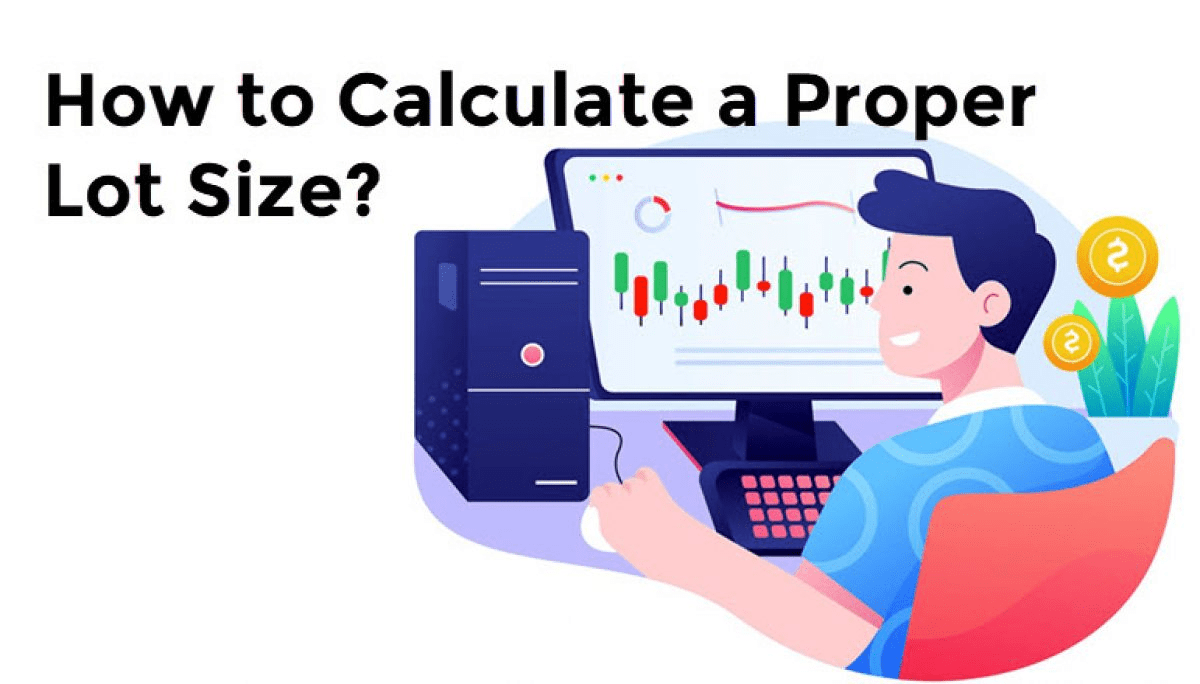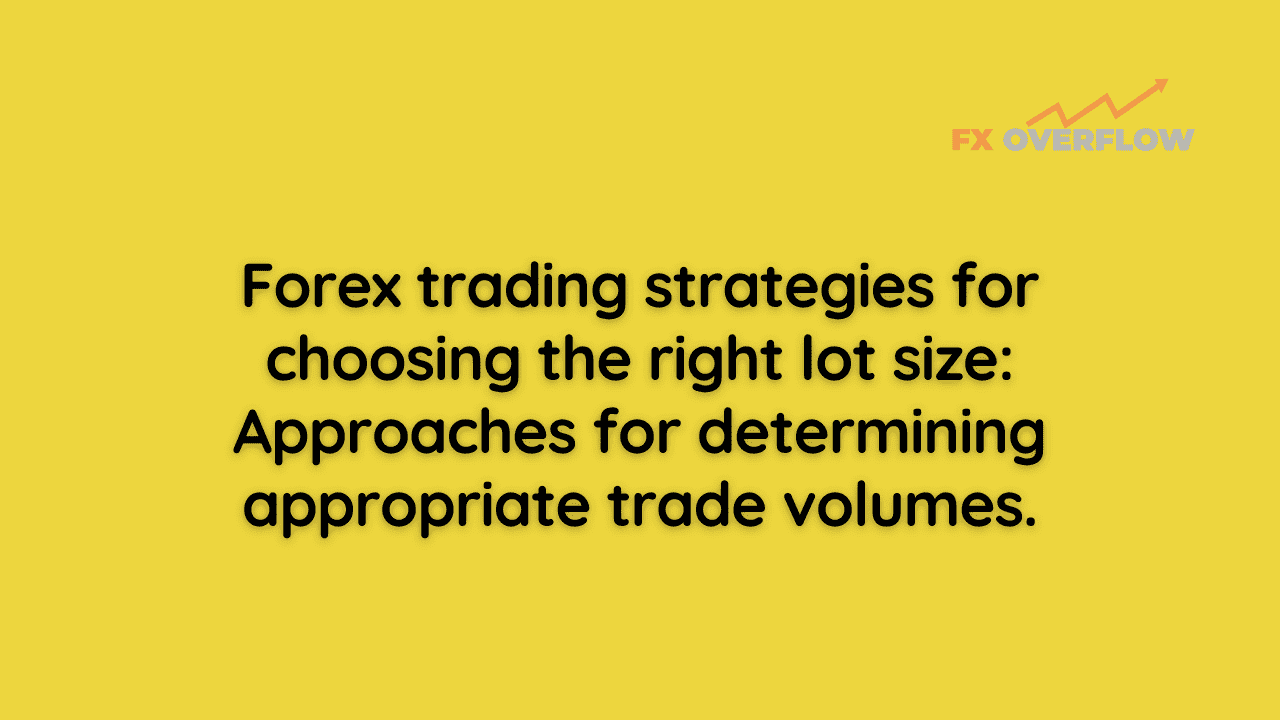Forex Trading Strategies for Choosing the Right Lot Size: Approaches for Determining Appropriate Trade Volumes
Forex trading, while offering great potential for profit, is also associated with inherent risks. Among the many aspects that contribute to successful trading, choosing the right lot size is a critical element. Lot size refers to the volume of a trade and directly affects risk management and profit potential. In this article, we will delve into various strategies for determining the appropriate lot size in forex trading, equipping traders with the knowledge they need to make informed decisions and enhance their trading outcomes.

Table Content:
1. Understanding Lot Size:
2. Approaches for Determining Lot Size:
3. Incorporating Practical Considerations:
4. Real-Life Examples and Case Studies:
5. Frequently Asked Questions (FAQs):
6. Footnote:
Understanding Lot Size:
Before delving into the strategies, let's establish a clear understanding of lot size. In forex trading, a lot represents a standardized unit of trading volume. There are three main types of lots:
- Standard Lot: 100,000 units of the base currency.
- Mini Lot: 10,000 units of the base currency.
- Micro Lot: 1,000 units of the base currency.
The choice of lot size can significantly impact the outcome of a trade, influencing both potential profit and potential loss. Therefore, it's crucial to choose the right lot size based on various factors.
Approaches for Determining Lot Size:
1. Fixed Lot Size Strategy:
The fixed lot size strategy involves trading a consistent number of lots in every trade, regardless of account size, risk tolerance, or market conditions. This approach offers simplicity and ease of implementation, making it suitable for traders who prefer a straightforward approach. However, it lacks flexibility in adapting to varying levels of risk and market volatility.
2. Percentage Risk Model:
The percentage risk model is a widely used strategy for determining lot size. This approach involves calculating the lot size based on a predetermined percentage of your trading capital that you are willing to risk on a single trade. For example, if you decide to risk 2% of your capital on a trade and your account balance is $10,000, then the maximum risk per trade would be $200. This model aligns lot size with risk tolerance and overall account balance.
3. Volatility-Based Approach:
Market volatility plays a crucial role in forex trading. The volatility-based approach considers the inherent volatility of different currency pairs when determining lot size. More volatile pairs might require smaller lot sizes to mitigate potential losses, while less volatile pairs might accommodate larger lot sizes for potentially higher gains. This approach acknowledges that different currency pairs have varying levels of risk associated with them.
4. Position Sizing Techniques:
Position sizing techniques involve using mathematical formulas to calculate the optimal lot size based on factors such as account size, risk tolerance, and market conditions. Two well-known position sizing methods are the Kelly Criterion and the Optimal-F approach. The Kelly Criterion aims to maximize the long-term growth rate of capital by considering the probability of success and potential reward-to-risk ratio. The Optimal-F approach adjusts the lot size based on the trader's confidence in a trade's success.
5. Using Stop Loss and Lot Size:
The placement of a stop loss order is closely tied to lot size selection. A tighter stop loss allows for a larger lot size, but it also increases the likelihood of getting stopped out prematurely. Traders must find a balance between a stop loss that provides adequate protection and a lot size that aligns with their risk tolerance.
Incorporating Practical Considerations:
1. Demo Trading for Lot Size Testing:
Before implementing a specific lot size strategy in live trading, it's advisable to test it in a risk-free environment. Demo trading allows traders to simulate real market conditions without risking actual capital. By testing different lot sizes on historical data, traders can assess the strategy's performance and adjust as needed.
2. Emotional Considerations:
The psychological aspect of trading cannot be overlooked. Emotions like fear and greed can significantly impact lot size decisions. Traders may feel tempted to increase lot sizes during winning streaks, leading to overtrading, or reduce lot sizes due to fear, resulting in missed opportunities. Maintaining emotional discipline is crucial for consistent lot size selection.
Real-Life Examples and Case Studies:
1. Case Study: Fixed Lot Size vs. Percentage Risk Model:
In this hypothetical case study, we compare the outcomes of using a fixed lot size strategy versus the percentage risk model. By analyzing different scenarios with varying account sizes and risk tolerances, we highlight the potential benefits and drawbacks of each approach.
2. Case Study: Volatility-Based Lot Sizing:
This case study explores the impact of market volatility on lot size selection. By analyzing historical volatility data of different currency pairs, we demonstrate how adjusting lot sizes based on volatility can lead to improved risk management and more balanced trading outcomes.
Frequently Asked Questions (FAQs):
Q1: What is the significance of choosing the right lot size?
A1: Choosing the right lot size is crucial for effective risk management and potential profitability in forex trading. It helps control potential losses and optimizes trading outcomes.
Q2: Is there a one-size-fits-all approach to determining lot size?
A2: No, there isn't a universal approach. The right lot size strategy depends on factors like risk tolerance, account size, market conditions, and trading goals.
Q3: How can I find the appropriate percentage for the percentage risk model?
A3: The percentage you choose depends on your risk tolerance and trading strategy. It's common to risk between 1% to 3% of your capital per trade, but this can vary based on personal preferences.
Q4: Can I change my lot size strategy over time?
A4: Yes, traders often adjust their lot size strategies as they gain experience and as market conditions change. Flexibility is essential for adapting to evolving circumstances.
Q5: What role do emotions play in lot size decisions?
A5: Emotions can lead to impulsive decisions, including inappropriate lot size choices. Maintaining emotional discipline is crucial for consistent and rational lot size selection.
Footnote:
Choosing the right lot size is a critical element of forex trading that cannot be underestimated. The approaches discussed in this article provide traders with a range of strategies to determine lot size based on various factors such as risk tolerance, account size, and market conditions. By understanding the strengths and limitations of each approach, traders can make informed decisions that align with their trading goals and risk management objectives. As the forex market continues to present opportunities and challenges, mastering the art of lot size selection will contribute significantly to a trader's long-term success.











Discussion